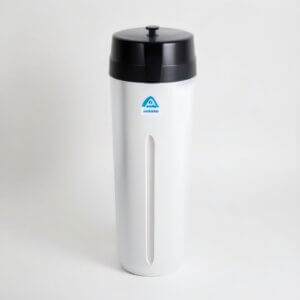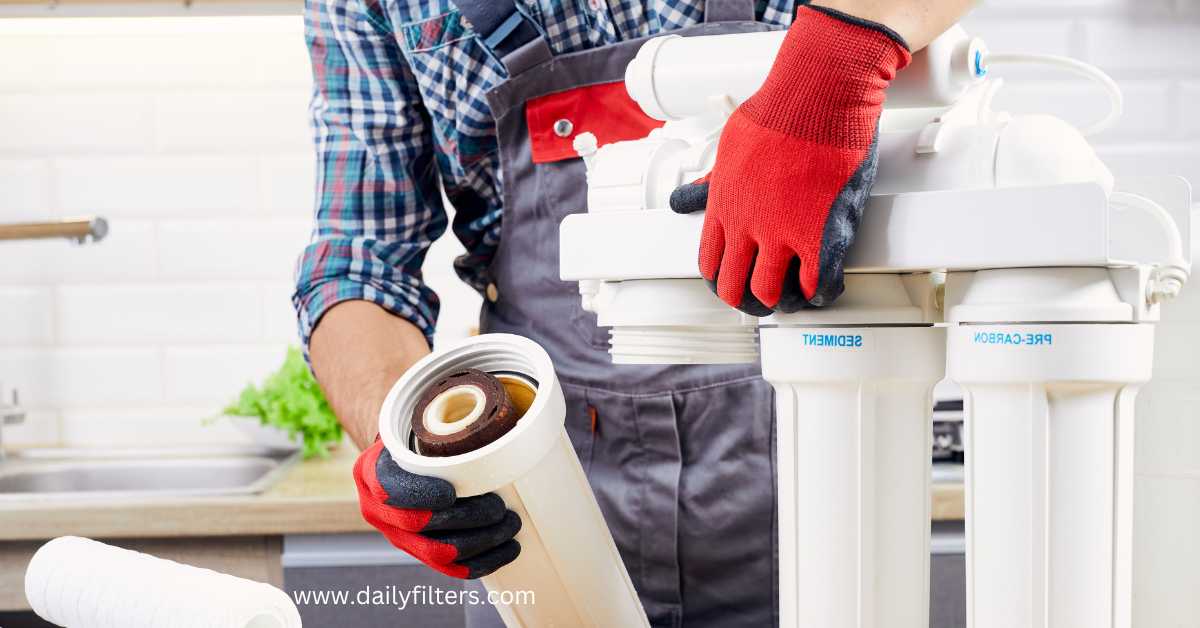Zero water filters are designed to remove 99.6% of dissolved solids and contaminants from tap water, giving you pure and refreshing drinking water. However, like any other water filter, they must be replaced periodically to maintain their effectiveness and avoid bacterial growth.
In this article, we will show you how to change zero water filters for different products, including pitchers, dispensers, faucet mounts, and showerhead filters.
We will also give you some tips on how to extend the life of your zero water filter and when to replace it.
Understanding Zero Water Filters
Zero Water filters utilize a unique filtration process to effectively remove impurities from tap water. Unlike traditional filters that only target chlorine and odor, Zero Water filters go further by reducing total dissolved solids (TDS) such as lead, chromium, and mercury. This advanced filtration technology ensures you get clean and great-tasting water from your faucet.
Signs that Your Zero Water Filter Needs Changing
Knowing when to change your Zero Water filter is essential to maintaining efficiency. The filter has an indicator mechanism that alerts you when it’s time for a replacement. Further, you may notice changes in the taste and odor of the filtered water. If the water flow becomes very slow, it is likely due to a clogged filter. These signs show that it’s time to change the filter and maintain the quality of your drinking water.
Gathering the Necessary Tools and Supplies
Before you begin the filter replacement process, gathering the necessary tools and supplies is important. First, identify the model and type of your Zero Water filter to ensure you purchase the correct replacement filter. Common tools required for changing the filter include a clean cloth or towel, a bowl or container for water drainage, and possibly a screwdriver or pliers, depending on the specific model.
Now we will discuss 3 types of zero-water filters and see how to change their filters.
1. How to Change Zero Water Filter for Pitchers and Dispensers
Zero water pitchers and dispensers are the brand’s most popular items since they are simple and available in various sizes and forms. A five-stage filtering system uses a coarse filter screen, a foam distributor, an activated carbon layer, an ion exchange resin layer, and a fine filter screen. These filters may eliminate toxins from your water, such as lead, chromium, mercury, chlorine, fluoride, nitrates, and others.
Following are the procedures to change the filter in a ZeroWater pitcher or dispenser:
- To disassemble the pitcher or dispenser, remove the cover and the water reservoir.
- Locate the old filter and spin it anticlockwise to untwist it from the reservoir’s bottom.
- Remove the old filter and thoroughly clean the reservoir with clean water.
- Remove the new filter from its package and soak it in cold water for about 15 minutes. This will activate the ion exchange resin and clear the filter of air bubbles.
- Align the new filter with the reservoir and spin it clockwise until it is secure.
- Put the pitcher or dispenser back together and refill it with cold water.
- Discard the first three batches of filtered water to cleanse the filter of any carbon dust or loose particles.
Take pleasure in your clean and tasty zero water!
2. How to Change Zero Water Filter for Faucet Mounts
Another easy option to receive filtered water from your tap is to use zero-water faucet mounts. A four-stage filtering system uses a sediment pre-filter, an activated carbon layer, an ion exchange resin layer, and a fine filter screen. Lead, chlorine, pesticides, herbicides, medicines, and other impurities in your water may be reduced by using these filters.
Follow these procedures to replace the filter in your ZeroWater faucet mount:
- Remove the old filter by pressing the release button on the side of the faucet mount and turning off the water supply to that sink.
- Remove the new filter from its box and hold it under running water until it is filled with cold water. This will help to moisten all of the filter’s surfaces.
- Please install the replacement filter until it snaps into the faucet mount.
- Turn on the water supply and run cold water through the filter for around 5 minutes to remove any carbon dust or loose particles.
- You can pick between filtered and unfiltered water using the lever on the faucet mount.
Enjoy your refreshing Zero Water!
Check out different Zero water filter on Amazon
3. How to Change Zero Water Filter for Showerhead Filters
Showerhead filters that use zero water are intended to enhance your showering experience by removing chlorine, scale, bacteria, fungus, algae, and other impurities from your shower water. They employ a three-stage filtration system comprised of a KDF-55 layer, an activated carbon layer, and a vitamin C layer.
These filters can improve the health of your skin and hair by preventing dehydration, irritation, and odor.
Following are procedures that how to change Zero Water Filter in the showerhead:
- Remove the old filter cartridge from the showerhead by unscrewing it from the shower arm.
- Remove the old filter cartridge and thoroughly cleanse the showerhead with clean water.
- Remove the new filter cartridge from its packaging and position it in the showerhead, blue end up.
- Replace the showerhead and stream heated water through it for about 2 minutes to activate the vitamin C coating.
Take a delightful and soothing zero-water shower!
Tips on How to Extend the Life of Your Zero Water Filter
Zero water filters are designed to last 25–40 gallons of filtered water, depending on your water quality and usage. However, there are some ways you can extend their life span and save money on replacement filters.
Regular maintenance is essential to prolonging the lifespan and effectiveness of your Zero Water filter. Here are some tips to keep your filter in optimal condition:
- Store your pitcher or dispenser in the refrigerator or another excellent place to prevent bacterial growth and slow the ion exchange.
- Avoid filtering hot water, as it can damage the filter and reduce its effectiveness.
- Pre-filter tap water with a sediment filter or a faucet aerator to remove large particles and debris that can clog the filter.
- Use the TDS meter with your zero water product to monitor the level of dissolved solids in your filtered water. When the reading reaches 006 ppm, it’s time to change the filter.
- Recycle your used filters with ZeroWater’s recycling program. You can return your filters to the company and get coupons for future purchases.

Benefits of Using Zero Water Filters
Zero water filters are handy and easy to use and offer several benefits for your health and the environment. Here are some of the perks you may get by utilizing zero-water filters:
- You may drink clear, refreshing water that is free of pollutants and tastes fantastic.
- You may boost your immune system, digestion, hydration, and metabolism by drinking filtered water.
- You can limit your exposure to hazardous chemicals and heavy metals that can cause numerous health problems, including cancer, neurological diseases, hormone imbalances, and developmental concerns.
- You can save money on bottled water and minimize plastic waste and your carbon footprint.
- You can support a socially responsible company devoted to delivering clean water to needy people.
Check out the Best Zero water filter on Amazon:
Conclusion
In conclusion, changing your Zero Water filter is a simple yet crucial step in ensuring clean and healthy drinking water. By following the specific instructions for each type of Zero Water filter, you can easily replace the filters in your pitchers, faucet mounts, and showerhead filters.
Remember to pay attention to the signs indicating when a filter needs changing and to follow the recommended maintenance tips to prolong the life of your filter.
Enjoy the benefits of Zero Water filters and the peace of mind of knowing you’re consuming purified water. Stay hydrated and make a positive impact on your health and the environment.
FAQs about How to Change Zero Water Filter
How often should I change my Zero Water filter?
It is recommended to change the filter every 2-3 months or when the indicator on the filter reaches the designated level. You can also check the water taste for this purpose.
What is the lifespan of a Zero Water filter?
The lifespan of a Zero Water filter depends on various factors such as water quality and usage. Generally, it lasts for approximately 2-3 months.
How do I know if my Zero Water filter needs changing?
The filter indicator will alert you when replacing the filter in your Zero Water pitcher or tank. Water taste, odor, or flow changes also indicate the need for a new filter.
Are Zero Water filters compatible with other pitcher brands?
Zero Water filters are designed explicitly for Zero Water pitchers and filtration systems. They may not be compatible with other brands’ pitchers or filters.
Can I use Zero Water filters with well water?
Yes, Zero Water filters can remove impurities from well water. They may, however, necessitate more frequent filter replacements due to potentially higher levels of contaminants.
What is the TDS reading, and why is it important?
TDS stands for Total Dissolved Solids and refers to the concentration of dissolved substances in water. A lower TDS reading indicates purer water. Ensuring that the TDS reading is within an acceptable range for drinking water is essential.
Are Zero Water filters recyclable?
Zero Water filters are not recyclable through standard curbside recycling programs. On the other hand, Zero Water has a recycling program where you can send back used filters for proper recycling.

